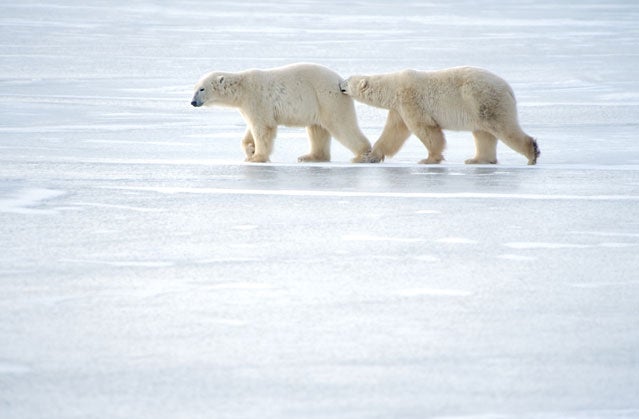
The first European to encounter the polar bears of what is now , was Jens Munk, a Norwegian explorer who wintered on the southern edge of Hudson Bay in 1619 during a doomed expedition to find the Northwest Passage. Munk and the crew of one of his ships, the ���Գ�ö���Ծ��Բ����, woke early one September morning to find the “large white bear” on the ice nearby, where it was scavenging scraps of blubber and meat from the carcass of a beluga that they had caught the day before. At as much as twice the weight of a Eurasian brown bear, the creature must have seemed absolutely massive to captain and crew.
So Munk did what European explorers frequently did when they encountered strange new animals or people: he shot it. The crew parboiled the animal’s flesh, soaked it in vinegar overnight, and ate it the next day. Munk had his share roasted over an open flame. “It was of good taste and did not disagree with us,” he wrote in his journal. (The joke, as it turned out, was on Munk: over the next several months, most his men died from a combination of scurvy and what was likely trichinosis from eating undercooked polar bear meat).
Four hundred years after Munk’s voyage, ���ϳԹ��� is headed back to the self-proclaimed Polar Bear Capital of the World. From November 1-6, I’ll be traveling to Churchill with to see the annual polar bear migration and learn how they, and the town that depends on them, are faring in the changing North.
Today, life in Churchill revolves around polar bears. Every October and November, over 10,000 visitors travel to this town of about 800 people to witness the migration, when the ursines venture out onto the frozen bay to hunt ringed and bearded seals. Tourists in Churchill are far more likely to aim at bears with a camera than a rifle, and problem animals are usually relocated rather than killed. (One repeat offender, dubbed Linda, returned to town so many times that , not far from the ���ϳԹ��� offices.)
Below the surface, though, the relationship between humans and polar bears is still complicated at best. Climate change is eating away at the sea ice that the bears use to hunt; this September, Arctic ice cover reached a new record low. For the bear population of Churchill—one of the most southerly in the world—the effects have been harsh. A 2007 study by researchers from the U.S. and Canadian governments found that the number of polar bears around Churchill dropped by more than 20 percent from 1984 to 2004. Fewer cubs survive to adulthood than did two decades ago. Of those that do, says Richard Ellis in his book , more and more are wandering into Churchill and other settlements on Hudson Bay in search of sustenance, leading to potentially lethal encounters with locals. “There is lots of ‘supplemental food’ wandering around the streets of Churchill for ‘nutritionally stressed bears,'” he writes.
You can follow along with the trip on our blog or on Twitter at and . Afterward, we’ll kick off our first-ever Polar Bear Week, during which we’ll feature articles, galleries, and live video feeds of the world’s largest terrestrial carnivore.
—Adam Roy
